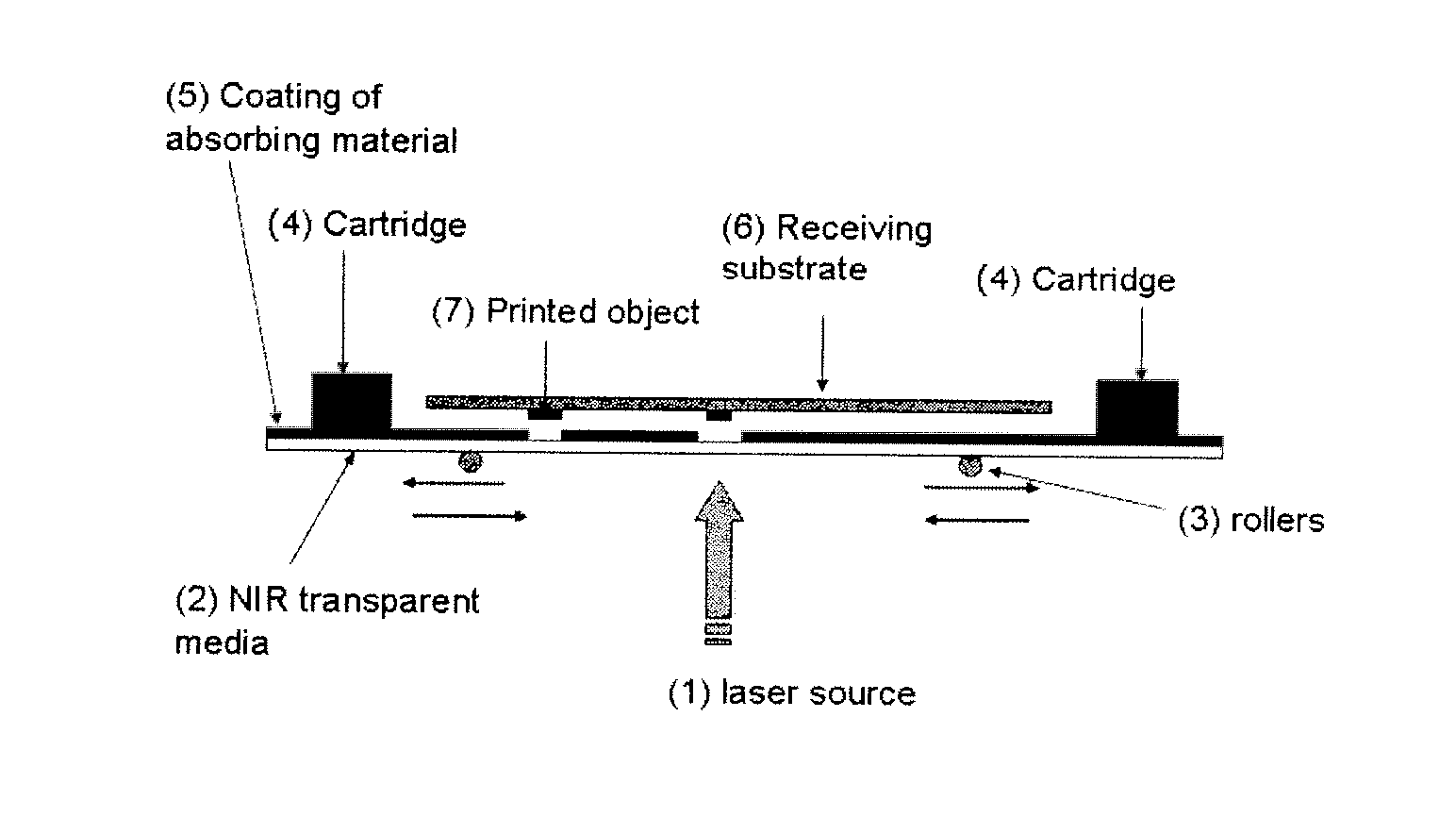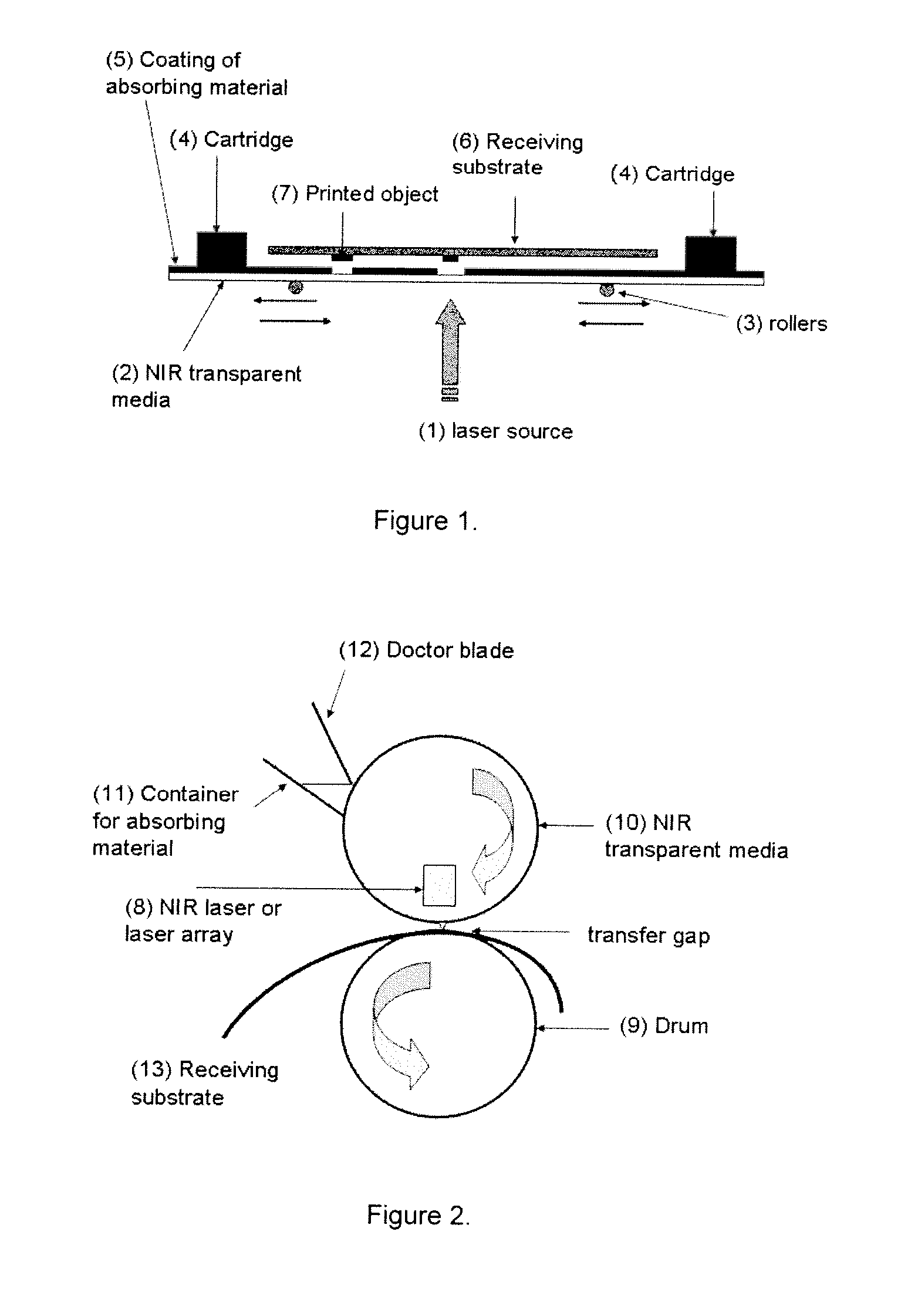Method and apparatus for deposition
a technology of deposition method and deposition apparatus, applied in the direction of chemical vapor deposition coating, solid-state device, final product manufacture, etc., can solve the problems of limiting the application of printed devices, short-circuit and failure of devices, and detrimental to the operation of printed devices obtained, so as to prevent or reduce the diffusion and migration of transferred functional materials
- Summary
- Abstract
- Description
- Claims
- Application Information
AI Technical Summary
Benefits of technology
Problems solved by technology
Method used
Image
Examples
Embodiment Construction
[0077]In the present invention, the laser source consists of a pulsed near-infra-red (NIR—range 800 to 2000 nm) laser or array of lasers. The power density may be optimised according to the beam optics, gap distance, and desired resolution of the printed object. The power density may also be chosen in such a way that the electromagnetic energy is absorbed by the water diluent but is not sufficient to vaporise, decompose or combust the other components of the composition. The power density may be greater than 104 W / cm2. The energy per pulse is preferably up to 5 J / cm2, for example, in the range of 10 micro joules / cm2 to 5 J / cm2. Recently developed laser diodes can achieve shorter pulses in the picosecond and femtosecond range and this makes the transfer system faster and more effective. The exact choice of the beam delivery system may be optimised depending on the required working distances, the focus spot size and absorption properties of the material to be transferred.
[0078]The dev...
PUM
| Property | Measurement | Unit |
|---|---|---|
| Temperature | aaaaa | aaaaa |
| Percent by mass | aaaaa | aaaaa |
| Percent by mass | aaaaa | aaaaa |
Abstract
Description
Claims
Application Information
 Login to View More
Login to View More - R&D
- Intellectual Property
- Life Sciences
- Materials
- Tech Scout
- Unparalleled Data Quality
- Higher Quality Content
- 60% Fewer Hallucinations
Browse by: Latest US Patents, China's latest patents, Technical Efficacy Thesaurus, Application Domain, Technology Topic, Popular Technical Reports.
© 2025 PatSnap. All rights reserved.Legal|Privacy policy|Modern Slavery Act Transparency Statement|Sitemap|About US| Contact US: help@patsnap.com


